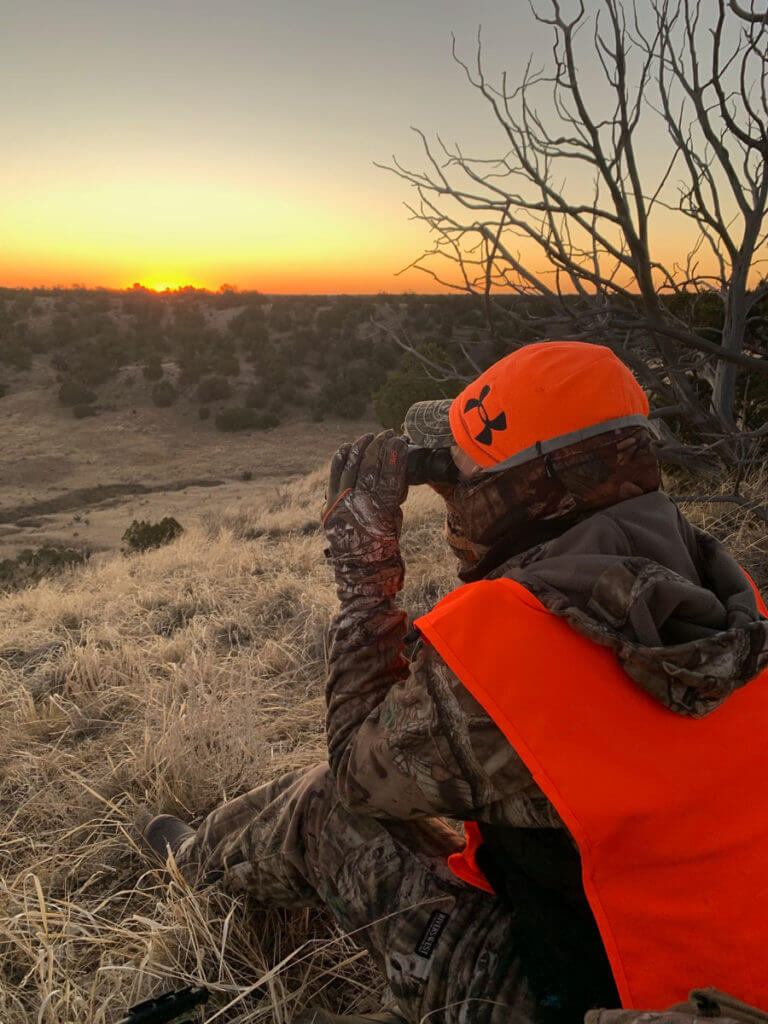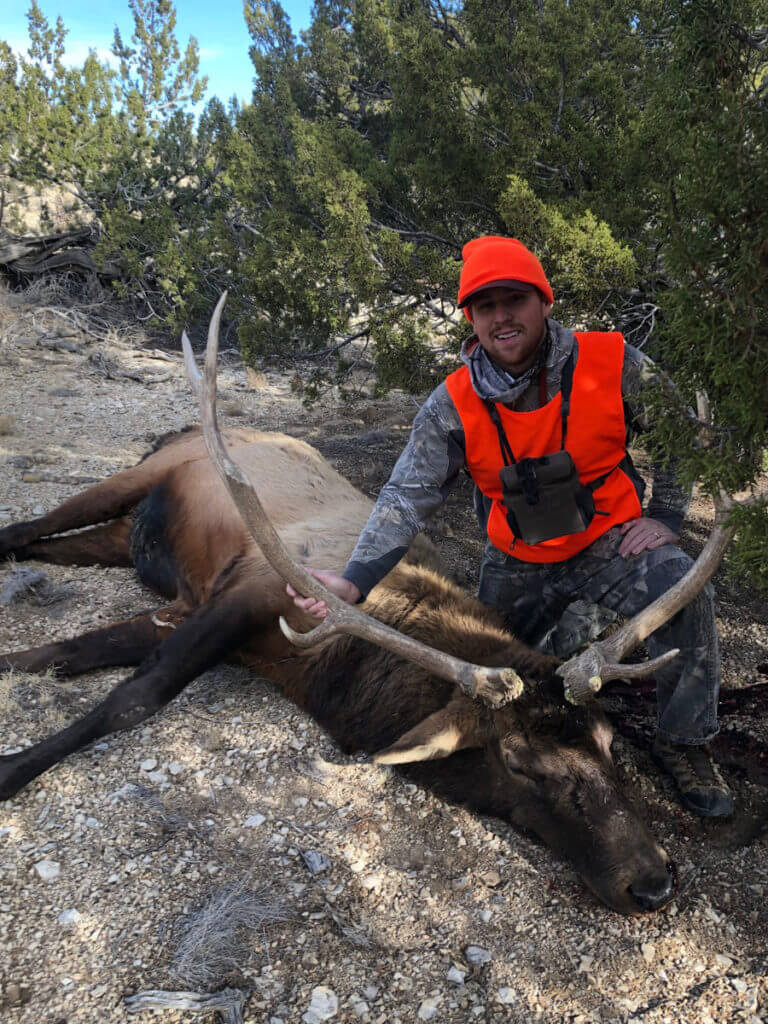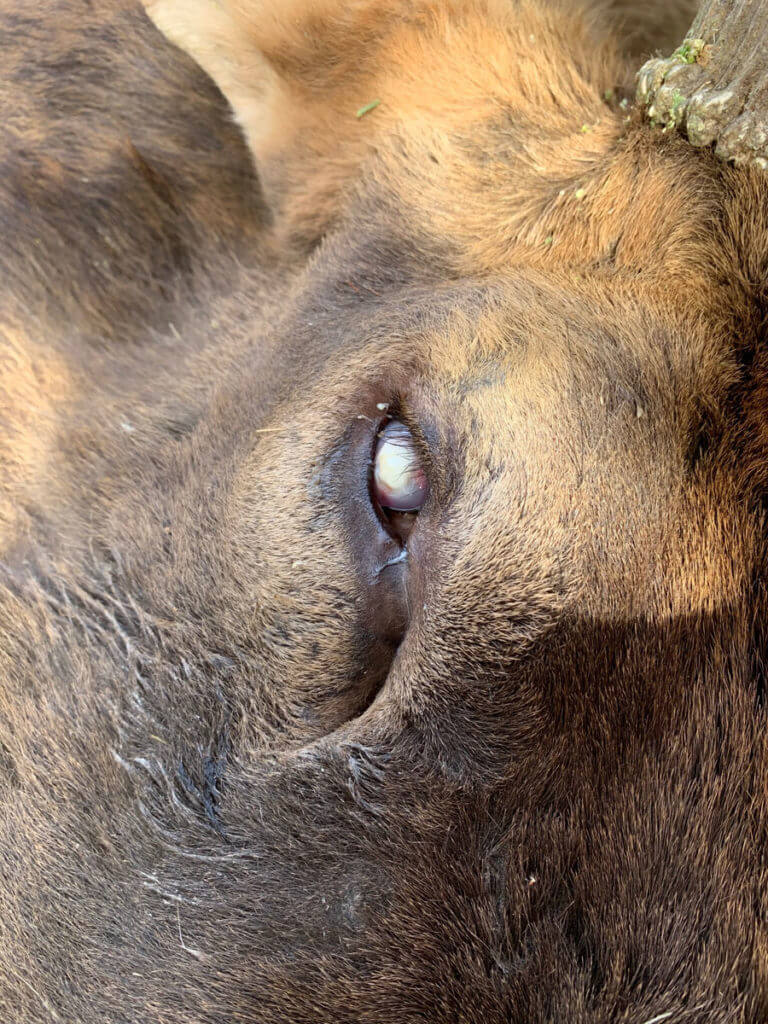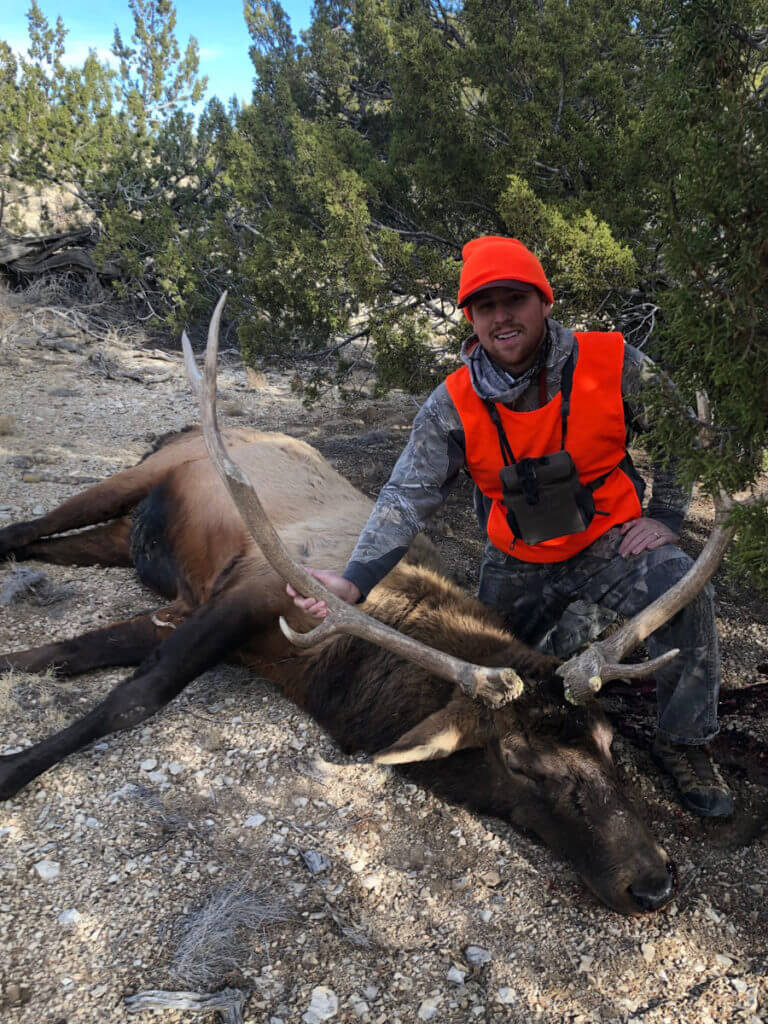Hunting elk during the early season on public land can be an action-packed experience. The bulls are usually fired up looking for cows and they do not care too much about the weather. It can be hot, cold, full moon or no moon and they will be out looking for the chance to impress the ladies. In stark contrast, late-season public land hunts can be battles of attrition. The elk have been hunted hard for three months and they are in survival mode. Only moving when it is necessary. Although the amount of action that you see is drastically slower than August and September, there are a few advantages to hunting late season.
The big bulls that have made it through the earlier seasons are usually off on their own. This can make them much more accessible. I have killed several nice bulls on late-season hunts because I only have to deal with one set of eyes, as opposed to multiple when they are hanging out with cows and calves.
This season I had an opportunity to hunt Colorado during the 4th rifle season. I usually love to hunt this season because you can depend on the weather being frigid and the animals must be on their feet in order to eat and survive. However, this year was nothing like I have seen in the past. The weather was in the mid 50’s during the day and we had to deal with a full moon. I’m talking about the kind of full moon when you don’t have to use a flashlight to walk through the woods on the way to your glassing spot before dark. I was hunting with my wife and I could see every detail of her face when we were talking about where to glass from the opening morning. Basically, the odds were against us in just about every way.
When the conditions are like this, I believe that there are two strategies that can be effective in getting an opportunity at an elk. Neither are perfect and both often end up with no shots being fired, but when the situations are not ideal you can either be a victim or try and make something happen. The two strategies that I use are sitting on water holes and still hunting.

If it is hot enough and there is a limited amount of water, elk will usually try to drink once every other day. In the southwest this can be very effective because of the lack of water, unfortunately, the area that I hunt has several dependable water sources and the elk seem to visit them randomly. And with the full moon, they were using the waterholes very early in the morning before legal shooting light.
So, the option that I chose to use and ultimately prefer to sitting, is still hunting. The risk with still hunting is that you have a greater chance of blowing the elk out of an area because you are spreading more scent and the elk will often see you before you see the elk. But if you go slow, I mean slow, moving and glassing every hole in the trees and checking out every branch and brown spot, it can be productive.
Where I hunt, much of the vegetation is pin᷈on and juniper. If you haven’t seen one of these trees before, they are large round evergreen trees that grow to about twelve feet in height with the trunks and underside of the trees exposed up to about 3 feet from the ground. So often when you are hunting elk or deer in this forest you are looking for legs and tops of antlers. This isn’t a bad situation because the animals also have a hard time making you out moving through the trees as well. The only issue with this is that where I hunt the ground is covered in a type of shale and it sounds like you are walking on eggshells with every step.

On this hunt, we decided to go to one of our favorite glassing points overlooking an area that my wife and I call “Death Valley”. It got this name because out of the last five years, we have shot 4 bulls within 200 yards of one another. So, it is a great place to spend the opening morning and look for some elk. Unfortunately, on this day the valley warmed up very early in the day and it was pushing 55 degrees by 9 O’clock with 20-30 MPH winds. I find that when it’s that warm and windy the elk head to bed early. This can be a great time to try and make something happen by still hunting and trying to find an elk in its bed. This is usually difficult where I hunt because, as I mentioned earlier, walking is made loud due to the shale on the ground. However, by strategically using the wind to muffle the noise, we were able to sneak through the woods quietly on this day.
My wife and I were moving through the woods very slowly with the wind in our face. Moving two or three steps, then stopping to pick apart the vegetation looking for any sight of an of elk. There was elk sign in the area, some that was fresh. This had us on our toes, hopeful that we might find a bull.
We had slowly made our way through the woods about 300 yards from where we had been glassing. It was very slow going, we were approaching a clearing in the trees when I saw a glimpse of brown. I immediately stopped and knew it was an elk. I made a motion to my wife that was only a few steps behind me. She froze in place, I confirmed that it was a bull by seeing the tops of his antlers just crest the trees. I tried to get my wife in a position to shoot but she could not locate the bull. Knowing we had to move fast, she mouthed, I can’t see him, SHOOT! Without hesitation, I shouldered my rifle and tried to find a clear shot through the trees. The bull had spotted us and was getting ready to run so I quickly found a small opening through the trees and fired my Savage 300 Win Mag.


The bull vanished! I immediately chambered another round and ran over to where I last saw the bull. Thinking that I had missed or wounded the bull and was going to put another round in him. I made it across the small clearing and to my excitement there was the bull.
He was dead right in his bed and had not taken a step after I fired. I had taken a great bull at less than 45 yards. He was an old warrior; blind in one eye, scars up and down his face and most of his tines had been broken off during the rut.

It was great to take such a unique bull in conditions that do not provide many opportunities for success, using a technique that is so high risk. So many times, hunters are restricted by weather and are helpless. In this situation, I was able to draw on experience and a little luck and make something out of nothing.
If you find yourself in a similar situation try a tactic like this. It may not lead you to punching a tag, but at least if you do come up unsuccessful, you will be able to say that you tried everything at your disposal to try and get the job done. And if you are successful, it will add another experience to draw from when times get tough in the future.